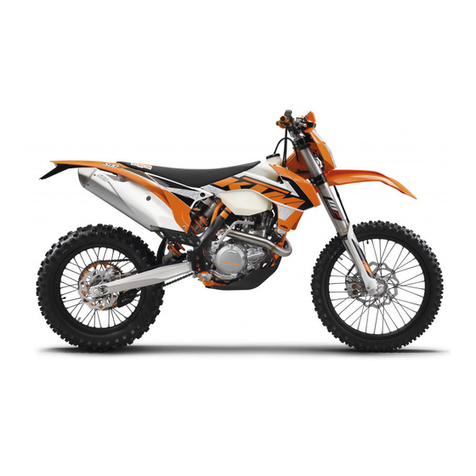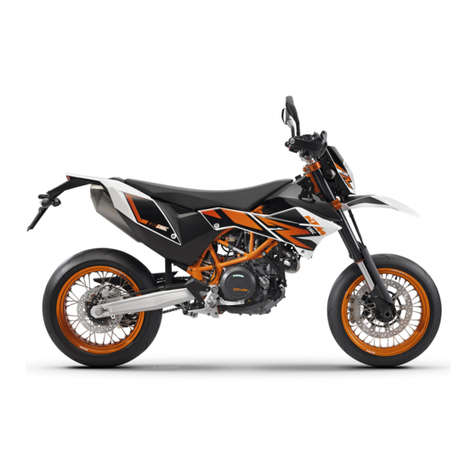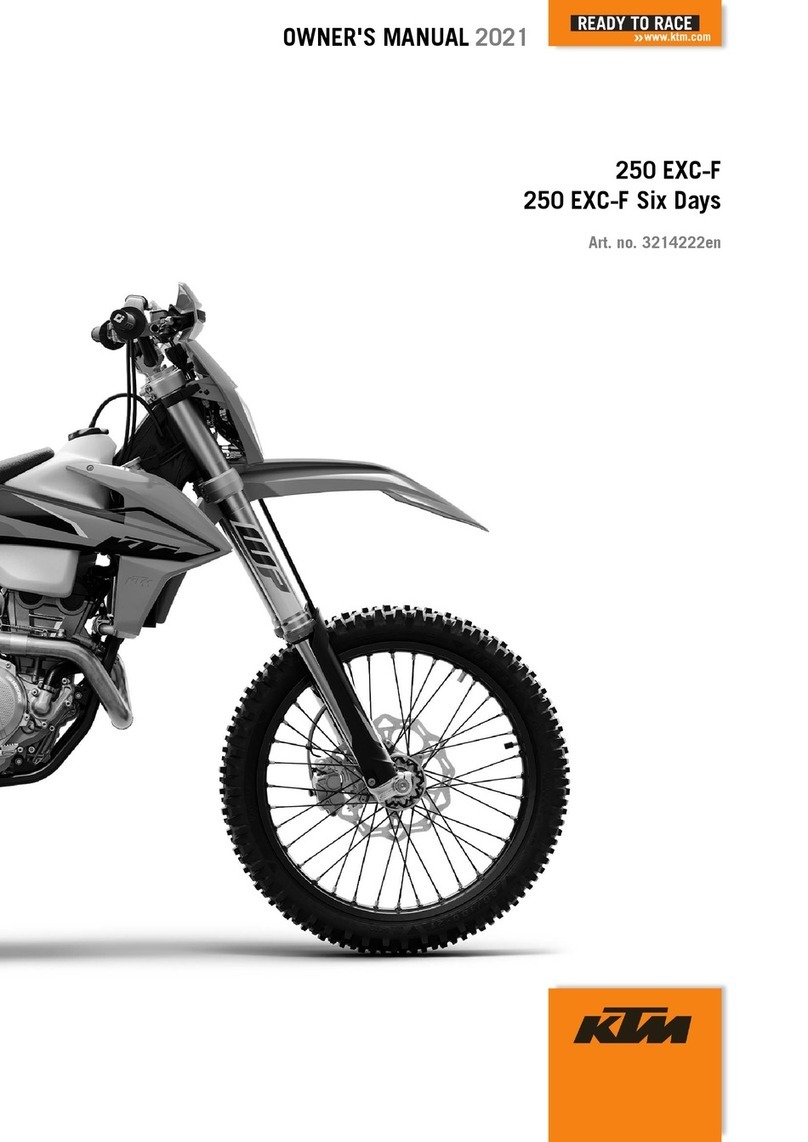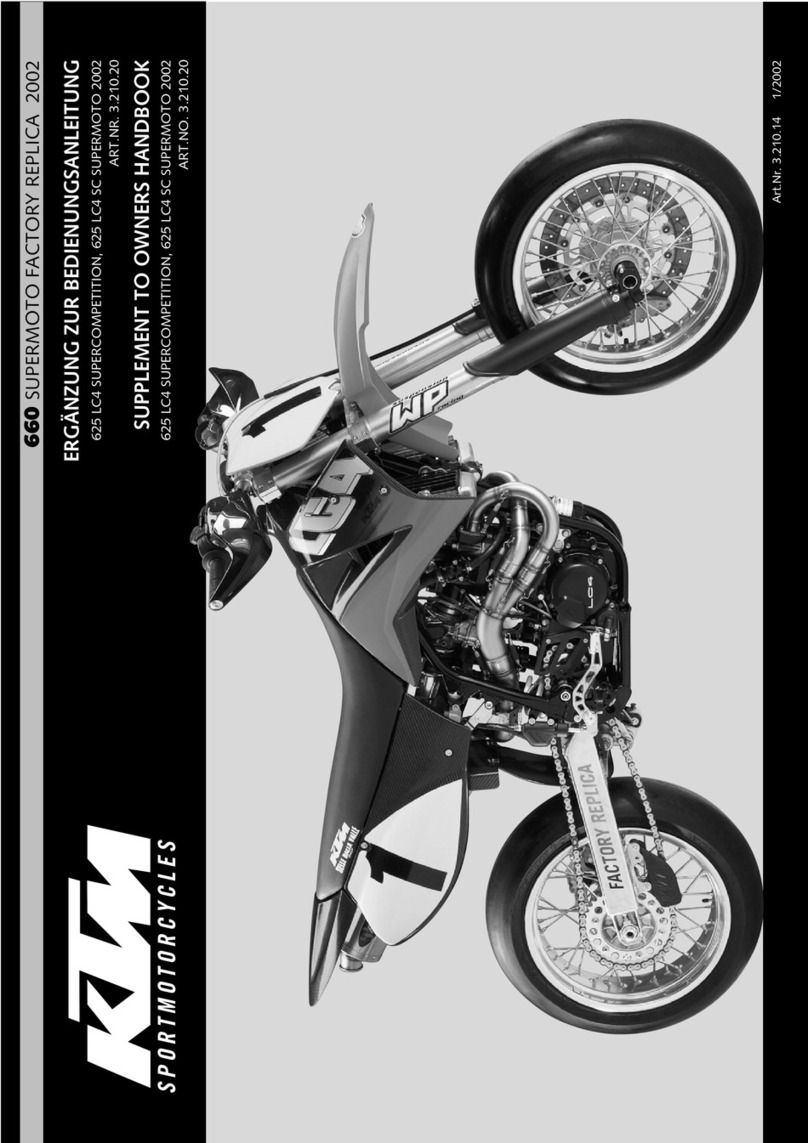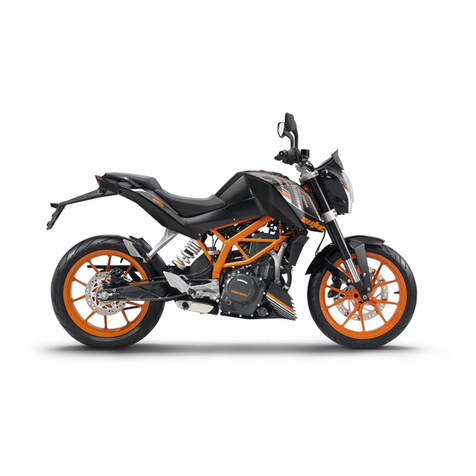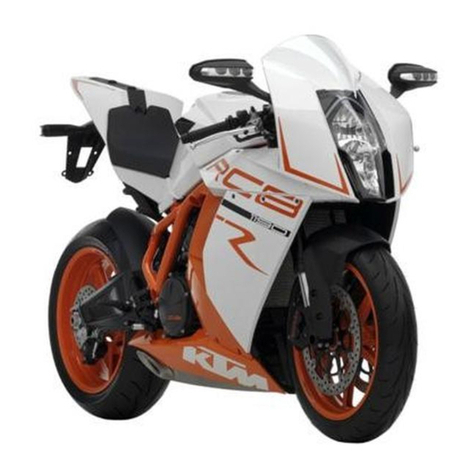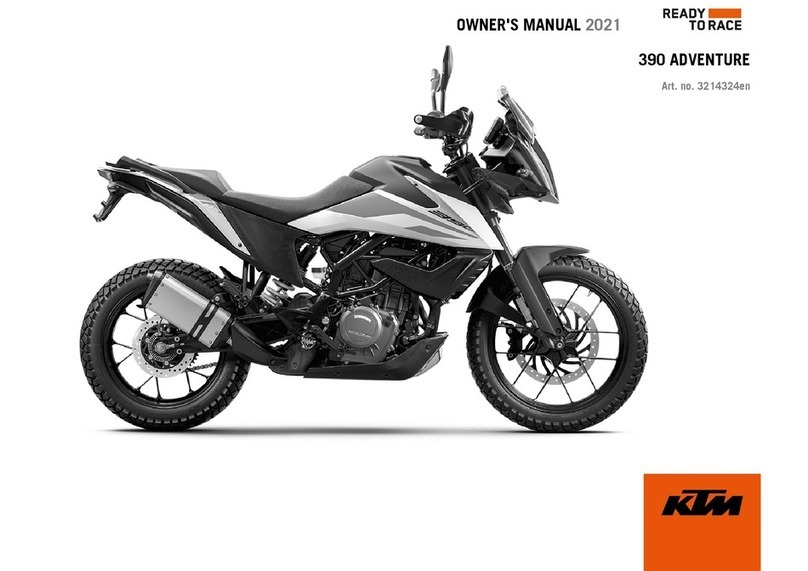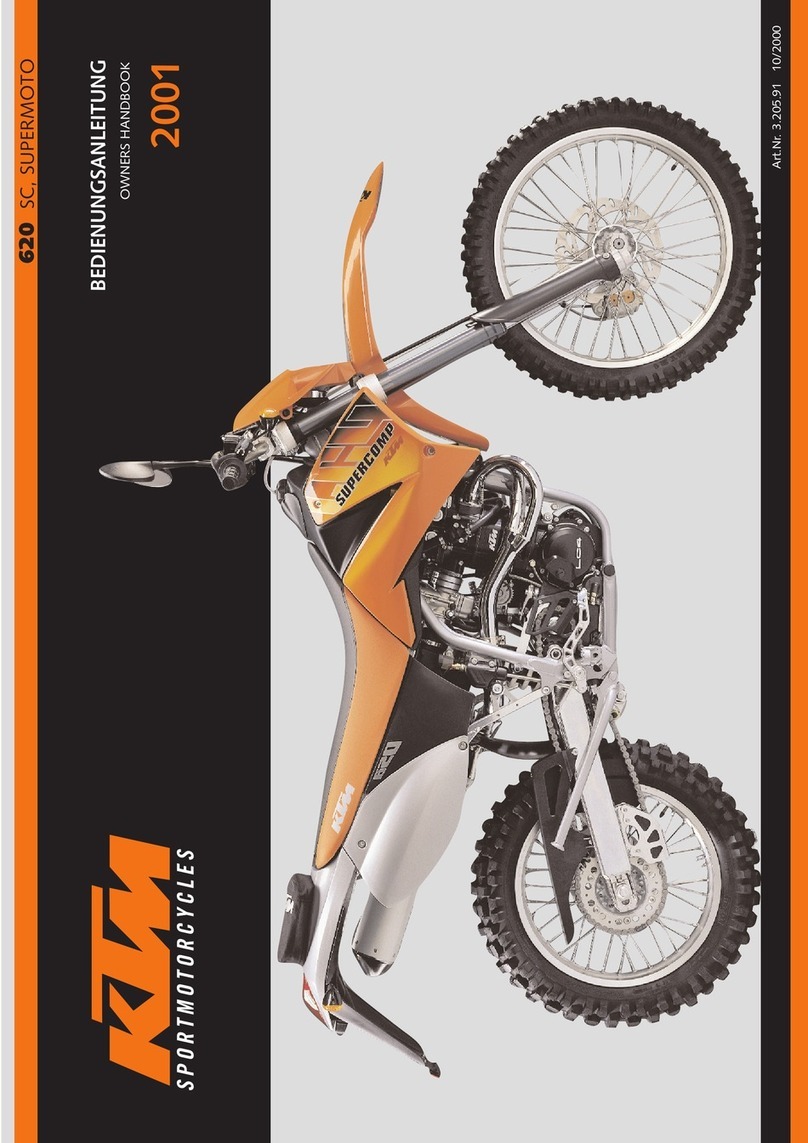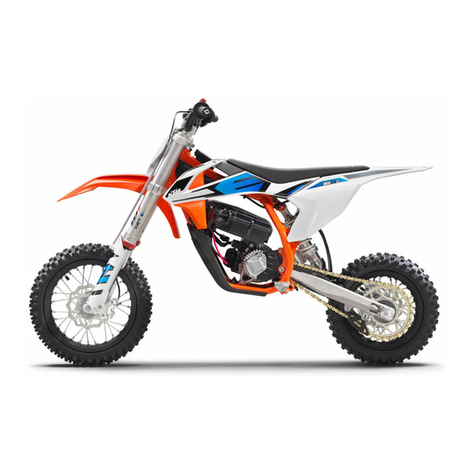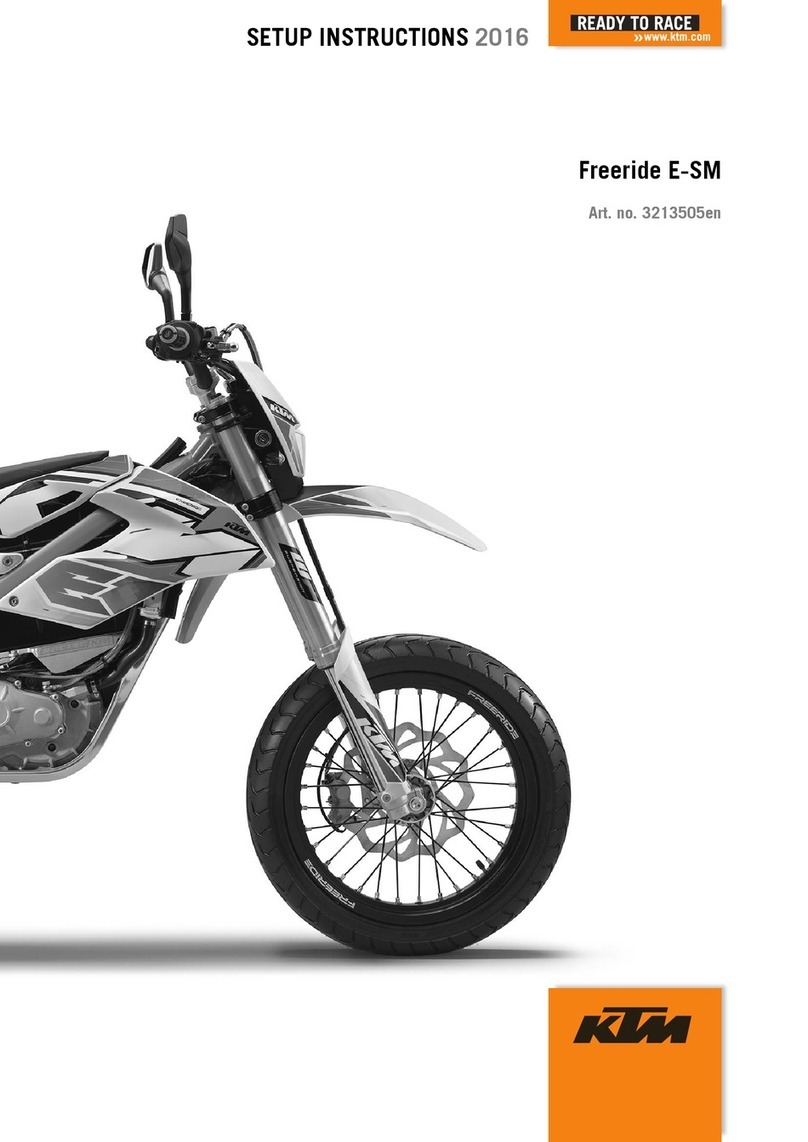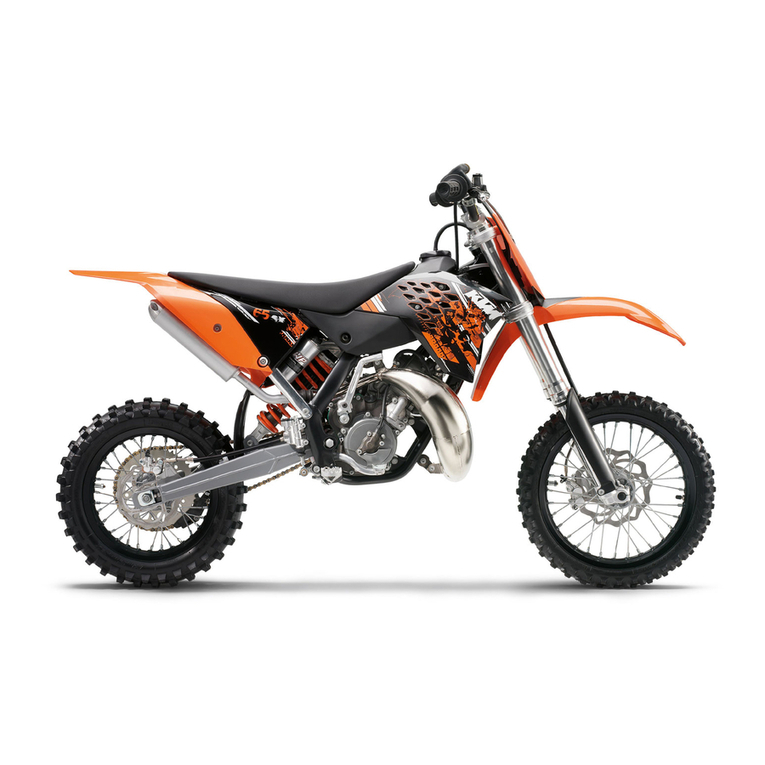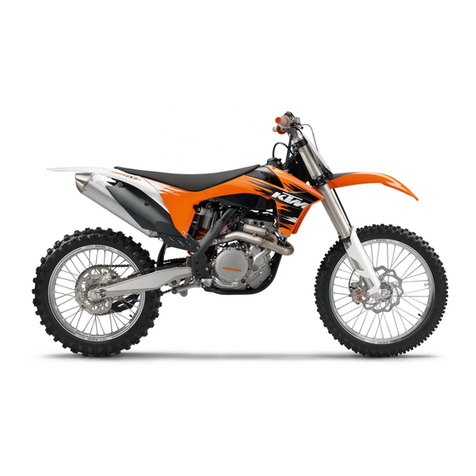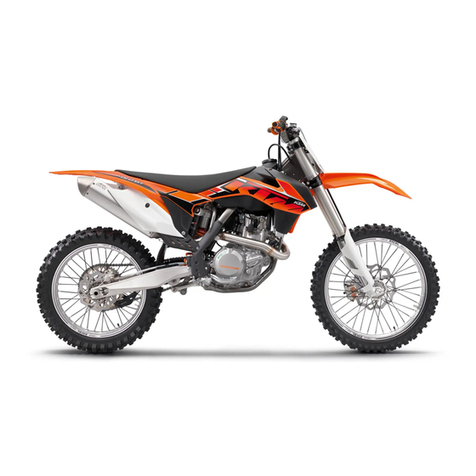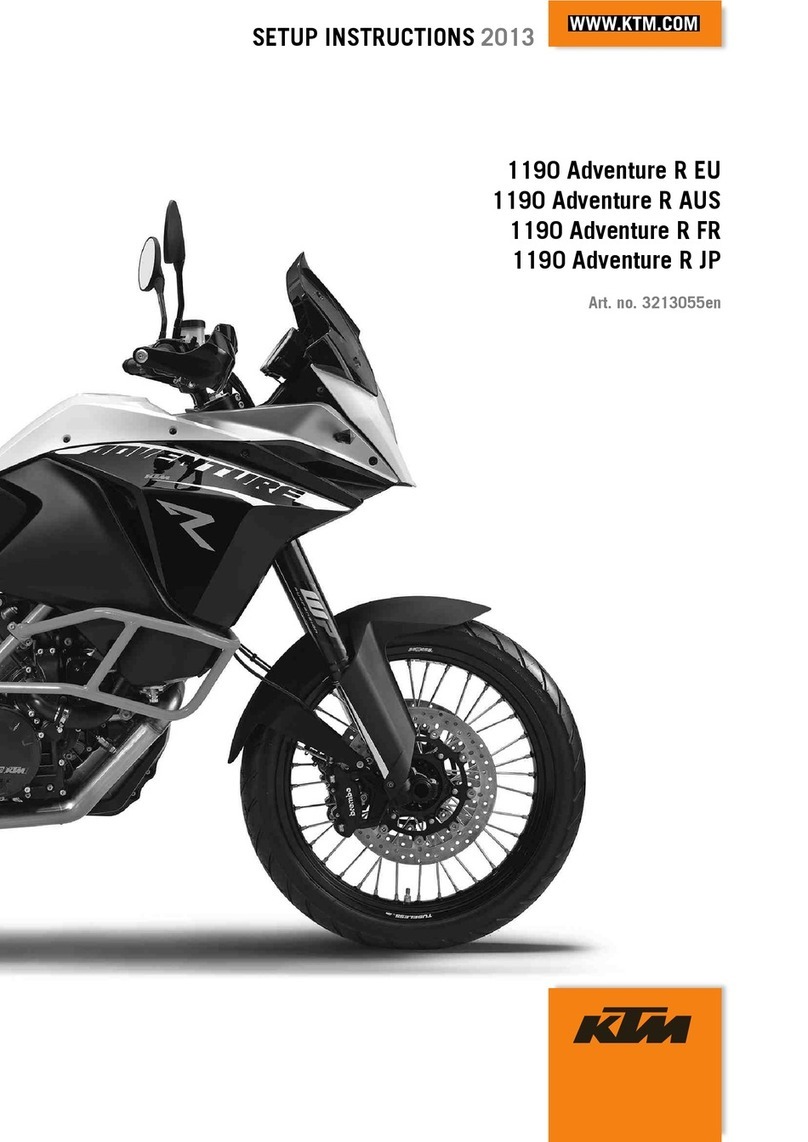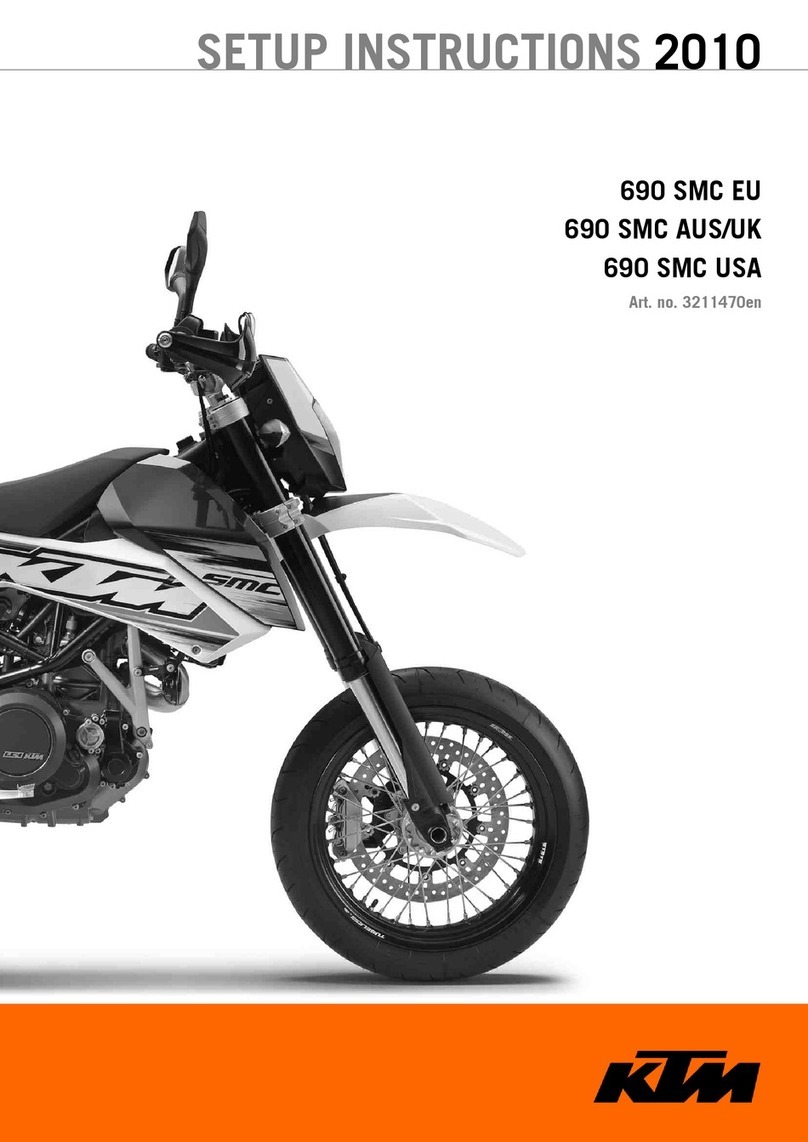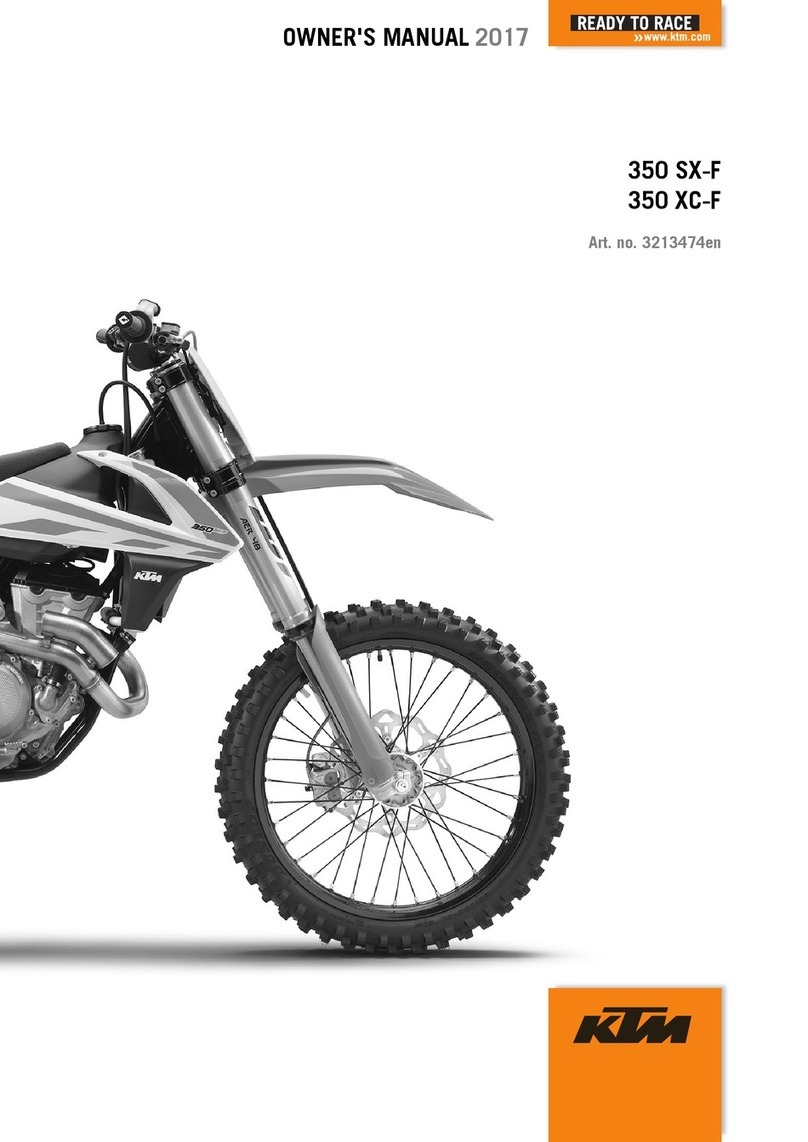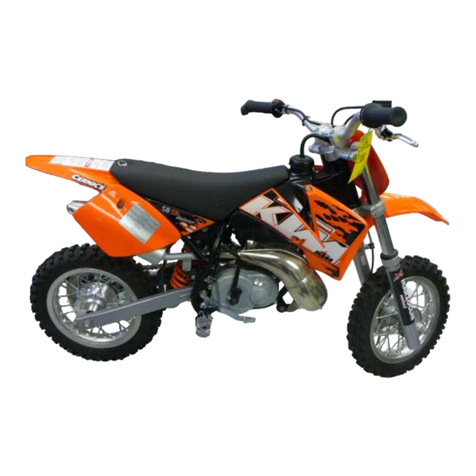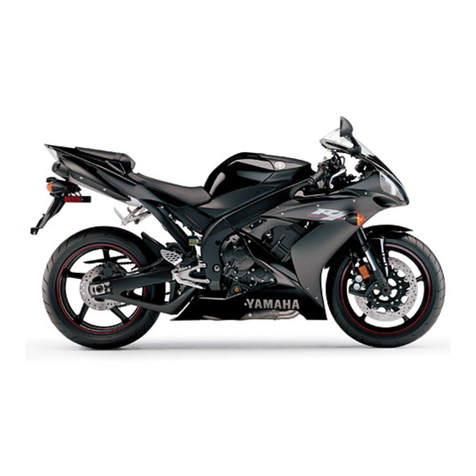
WORK 3
7
3.1 Removing the passenger seat
V00043-10
–Insert the ignition key in seat lock 1and turn it clockwise.
–Raise the rear of the passenger seat cover, push it toward the
rear, and remove it upward.
–Remove the ignition key from the seat lock.
3.2 Mounting the passenger seat
K00421-10
–Hook holding lugs 1of the passenger seat onto the storage
compartment, lower the rear and push forward.
–Press passenger seat downward until it clicks into place.
Warning
Danger of accidents The seat can come loose from the
anchoring if it is not mounted correctly.
–After assembly, check whether the seat is correctly
locked and cannot be pulled up.
–Finally, check that the passenger seat is correctly mounted.
3.3 Charging the 12-V battery
Warning
Risk of injury Battery acid and battery gases cause serious chemical burns.
–Keep 12 V batteries out of the reach of children.
–Wear suitable protective clothing and safety glasses.
–Avoid contact with battery acid and battery gases.
–Keep sparks or open flames away from the 12 V battery.
–Only charge 12 V batteries in well-ventilated rooms.
–Rinse the affected area immediately with plenty of water in the event of contact with the skin.
–Rinse eyes with water for at least 15 minutes and consult a doctor immediately if battery acid and
battery gases get into the eyes.
Note
Environmental hazard 12 V batteries contain environmentally hazardous materials.
–Do not dispose of 12 V batteries as household waste.
–Dispose of 12 V batteries at a collection point for used batteries.
Note
Environmental hazard Hazardous substances cause environmental damage.
–Dispose of oils, grease, filters, fuel, cleaning agents, brake fluid, etc., correctly and in compliance with
the applicable regulations.
